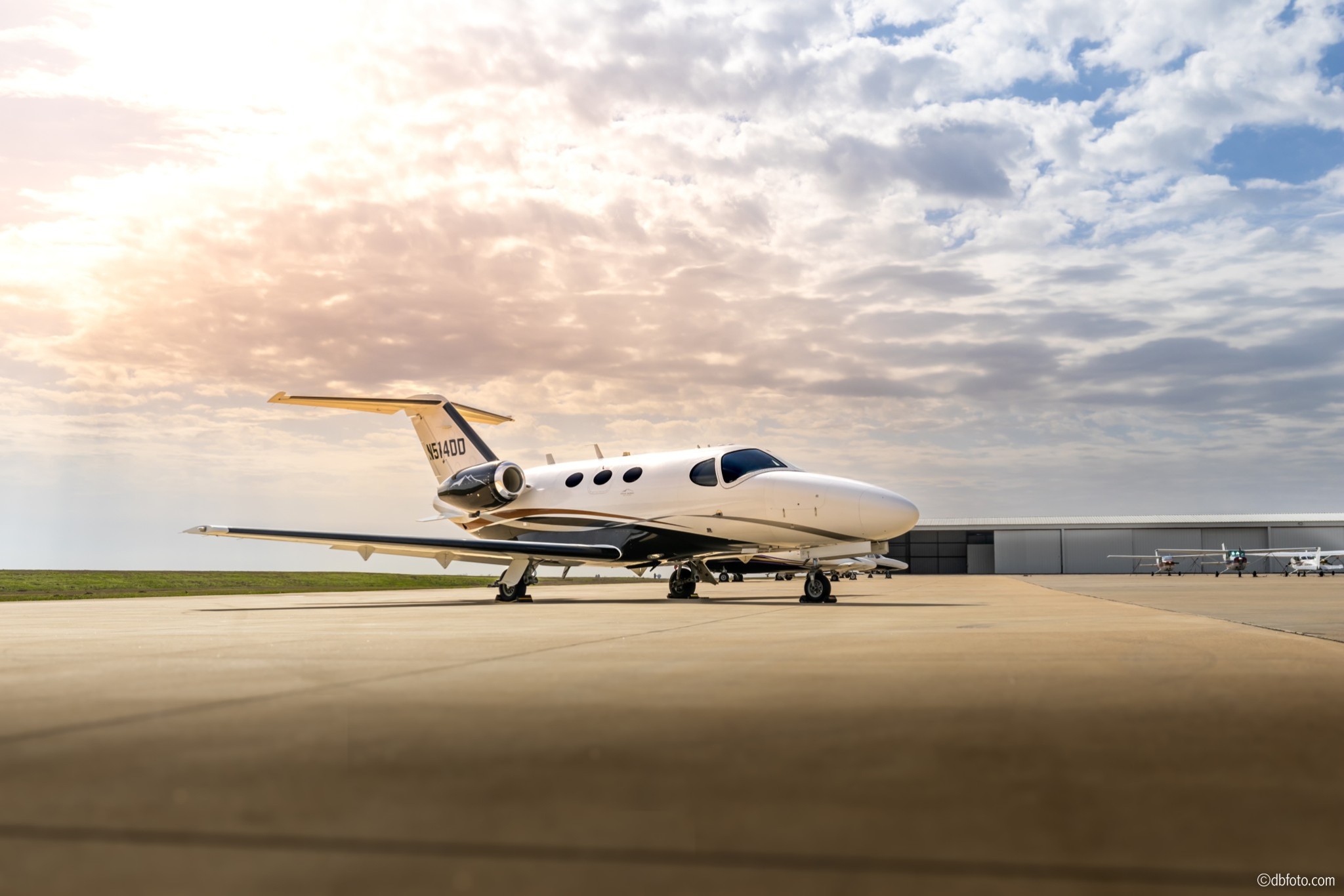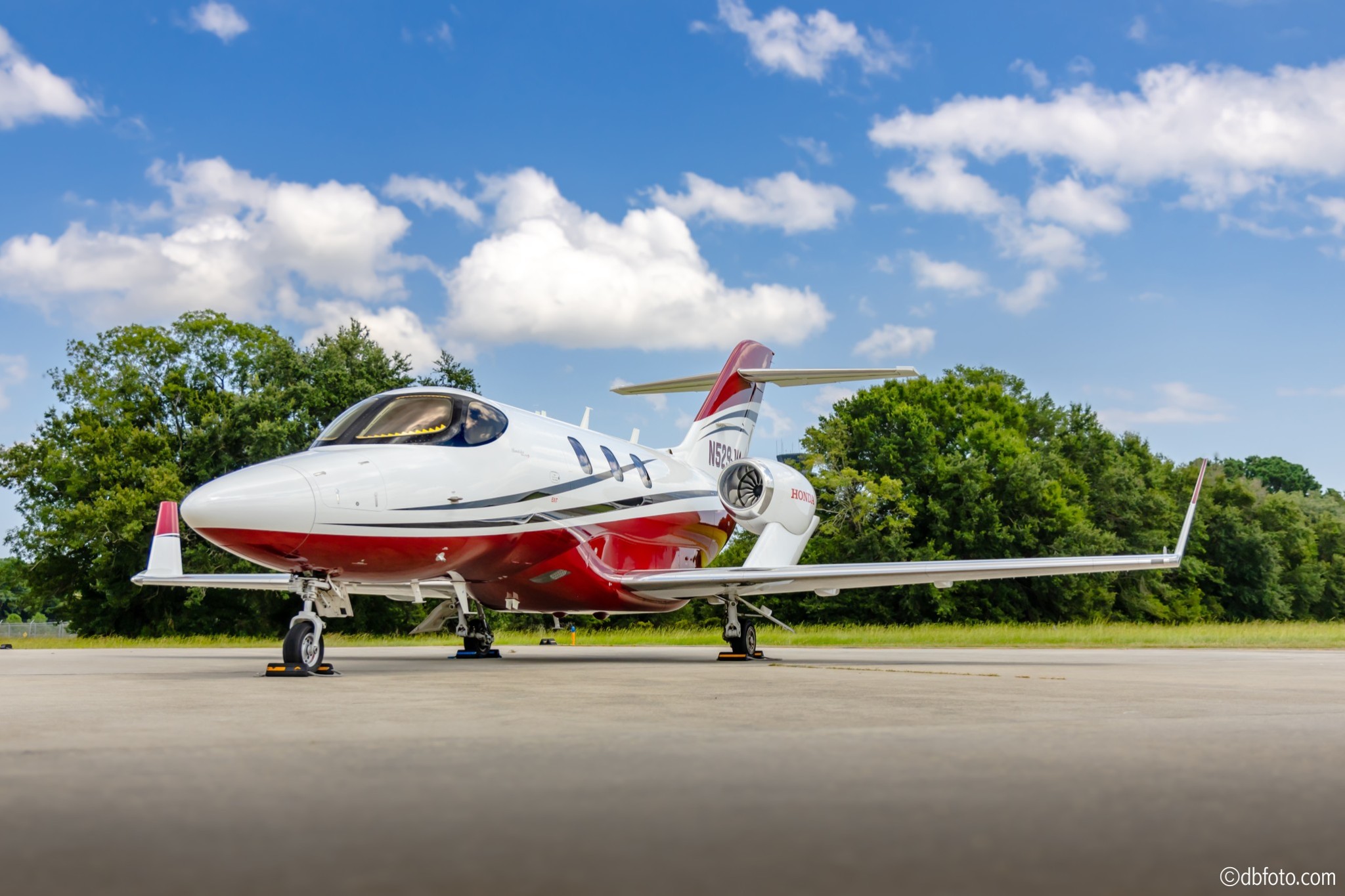
CJ1+ vs M2
Date
April 19, 2023Author
Mickea Smith, Sales DirectorWe often hear multiple opinions on the Citation M2 and Citation CJ1+ models and whispers around the similarities and differences of the two.
The CJ1+ was announced in 2004 as the successor of Cessna’s CJ1. At the time, customers wanted improved performance along with interior updates and integrated avionics. And the CJ1+ delivered just that.
At FL 410, the CJ1+ can travel up to 20 knots faster than the CJ1 with the FADEC-controlled Williams FJ44-1AP engines and 1,965 pounds of thrust. The gross weight was also increased by 100 pounds totaling out at 10,800 pounds. Max cruise at FL 310 is 389 knots and max IFR range with a single pilot and three passengers is 1,285 NM.
 The CJ1+ came standard with the Collins Pro Line 21 avionics package: essentially a simplified version of an airliner cockpit incorporating “airliner” technology into an easy-to-use package for light jets. The Collins system was an upgrade from the straight CJ models with standard features on the CJ1+ including a co-pilot PFD, Flight Managements System, broadcast geographical weather, Skywatch HP, and Landmark TAWS. The CJ1+ also features integrated avionics, FMS performance database, FADEC engines, electronic checklist, and a maintenance diagnostic system that was not previously available on the CJ1.
The CJ1+ came standard with the Collins Pro Line 21 avionics package: essentially a simplified version of an airliner cockpit incorporating “airliner” technology into an easy-to-use package for light jets. The Collins system was an upgrade from the straight CJ models with standard features on the CJ1+ including a co-pilot PFD, Flight Managements System, broadcast geographical weather, Skywatch HP, and Landmark TAWS. The CJ1+ also features integrated avionics, FMS performance database, FADEC engines, electronic checklist, and a maintenance diagnostic system that was not previously available on the CJ1.
The interior on the CJ1+ includes a lefthand, belted flushing lavatory, deluxe refreshment center, over-water life vests, and indirect lighting. The CJ1+ also features an automotive-like cockpit overhead lining much like Cessna’s mid-sized jets.
In 2011, Cessna ceased production on the CJ1+ and the M2 program was introduced. The M2 can climb to FL 410 directly in 24 minutes. That’s an improvement over the straight CJs which took 58 minutes to climb to FL 410, including a step. While the M2 looks a lot like an updated CJ1+ on the exterior, it slightly outperforms the CJ1+’s book numbers with a max cruise speed of 404 KTAS verses the CJ1+’s 389 KTAS.  The M2 offers greater situational awareness with the touchscreen G3000 avionics suite, showcases a newly designed interior, and features the addition of “swooplets” to the wings. The M2 also offers pilots more legroom; however, the M2 still has a cabin width of 58 inches and a height of 57 inches. These measurements have not changed since the CJ1. The M2 also offers a belted toilet seat with an optional dual-side hard wall or curtain. A side facing seat up front equals a total capacity of two pilots and six passengers or one pilot and seven passengers. Ladies wearing high heels or even the four-legged passengers will find climbing on board the M2’s new entry stair easier with three entry steps instead of two.
The M2 offers greater situational awareness with the touchscreen G3000 avionics suite, showcases a newly designed interior, and features the addition of “swooplets” to the wings. The M2 also offers pilots more legroom; however, the M2 still has a cabin width of 58 inches and a height of 57 inches. These measurements have not changed since the CJ1. The M2 also offers a belted toilet seat with an optional dual-side hard wall or curtain. A side facing seat up front equals a total capacity of two pilots and six passengers or one pilot and seven passengers. Ladies wearing high heels or even the four-legged passengers will find climbing on board the M2’s new entry stair easier with three entry steps instead of two.
The cockpit of the M2 has a few key differences over the CJ1+, the most noticeable is the smaller console. The large FMS in the CJ1+ takes up a lot of space in between the seats. In the M2, the center console houses power levers, flap levers, and two Garmin GTC 570 touchscreen controllers making the console considerably smaller than the CJ1+. The allure of the Garmin G3000 panel is perhaps the most notable difference in the cockpit. Three 14” high-resolution displays offer a PFD for both the pilot and co-pilot as well as an MFD in the middle. The M2’s pressurization system is automatic and easily managed through the G3000. Almost all the M2’s systems are still simple, much like its other smaller Citation predecessors; however, another modification to the M2’s electrical system is the second independent battery in the nose. This allows pilots of the M2 to switch on the avionics to set up flight plans, check weather, and obtain clearances before engine start-up. In the event there is an electrical system emergency, this second battery provides double the back-up with one hour instead of thirty minutes. An additional notable difference is no need to add Prist or any other anti-icing additives to the M2’s fuel, since an oil heat exchanger warms the fuel.
In November 2021, Cessna announced the production of the M2 Gen 2. There were a few changes made to the new model, mostly interior and connectivity upgrades. The right hand nav chart tray was relocated, and the co-pilot seat now provides an addition 3.4” of legroom. The side passenger seat now folds down and can hold up to 50 pounds of baggage. A coat hook was also added next to the side seat. The seating is much more of a contemporary style, and the cabin now features upwash lighting. The upwash lighting projects the light towards the ceiling thus giving the cabin a more open and brighter feel. Four wireless charging docks were added, and there are USB charging ports at the seats.
How about the market on these birds? There are 101 CJ1+s currently in operation. In 2022, there were 12 total CJ1+ transactions averaging in the mid to high $2Ms. There are currently 307 M2s and 28 M2 Gen2s in operation. There were 63 pre-owned sales (M2 and M2 Gen 2 combined) also in 2022 with an average sale price in the mid $4Ms. At the end of Q4, the price range varied greatly from higher $3Ms for an early model M2 to the $6M mark for a pre-owned M2 Gen 2.
The M2 might have all the appeal of the latest and greatest technology, but, when you compare performance and pricing, the CJ1+ is not to be disregarded.



